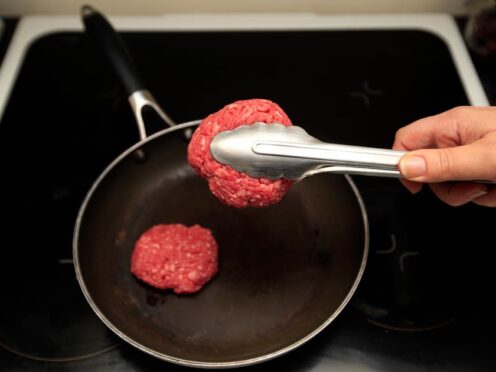Men tend to eat meat more often than women, and this is seen most in countries such as the UK where there are higher levels of gender equality, a study suggests.
Higher levels of gender equality and development might mean women have more freedom to ditch meat, while it may also enable men to purchase and eat meat more often, researchers say.
The findings suggest that where men and women are able to exercise more choice because of greater financial flexibility and weaker gender norms, there may be more differences between genders.
Christopher Hopwood, from the University of Zurich, Switzerland, corresponding author, said: “The novel finding from our study is that the gender difference in meat consumption is larger in countries with higher levels of economic and human development and greater gender equality.
“This might seem paradoxical if you assume that men and women would tend to behave more similarly in contexts where genders are more equal.
“Instead, our findings suggest that in contexts in which men and women are freer to exercise greater choice because of higher financial flexibility and weaker gender norms, differences between genders may be more likely to emerge.”
The study found that with the exception of China, India and Indonesia, men tended to eat meat more frequently than women.
The differences in meat consumption were greater in countries with more gender equality and social and economic development, with the greatest differences seen in Germany, Argentina, Poland and the UK, the study found.
According to the findings, in countries with higher levels of gender equality and social and economic development both men and women tended to eat meat more often than those from countries with lower levels of social and economic development.
Thailand, China, the US and Spain were the countries with the highest meat consumption.
Prof Hopwood said: “Our findings highlight that patterns of meat consumption vary across context and gender, and this may be helpful for developing effective meat reduction strategies at the international, national, and individual levels.
“At the individual level, it may be possible to tailor appeals based on individual characteristics such as gender.”
In the study, published in Scientific Reports, the researchers investigated differences in meat consumption between men and women across countries with differing levels of social and economic development, which was measured by life expectancy, years of schooling, and gross national income, and gender equality – as measured by economic participation, education levels, political empowerment, and health and survival.
They analysed survey data collected in 2021 from 20,802 people from 23 countries in North and South America, Europe and Asia.
People were asked to report their gender and how frequently they ate meat.
